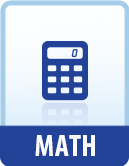|
This section contains 1,029 words (approx. 4 pages at 300 words per page) |

|
The German mathematician Georg Cantor (1845-1918), who laid the foundation of modernset theory, utilized the idea of "one-to-one correspondence" as a way of "counting" the members of a set. Thus he defined a finite set as either the empty set or a set whose members can be placed in one-to-one correspondence with the set {1, 2, 3, ... , n} where n is some positive integer. An infinite set, then, was defined as a set that was not finite. Many of Cantor's most interesting and sometimes provocative results concerned his theory of infinite sets. These he broke into two types, the denumerably infinite and the non-denumerably infinite sets. The denumerably (or countably) infinite sets are sets whose members can be placed in one-to-one correspondence with the infinite set {1, 2, 3,...} of positive integers. The even integers {2, 4, 6,...} are denumerably infinite since we can correspond 2 with 1, 4 with 2, 6 with 3, ... , and so on. On the...
|
This section contains 1,029 words (approx. 4 pages at 300 words per page) |

|


